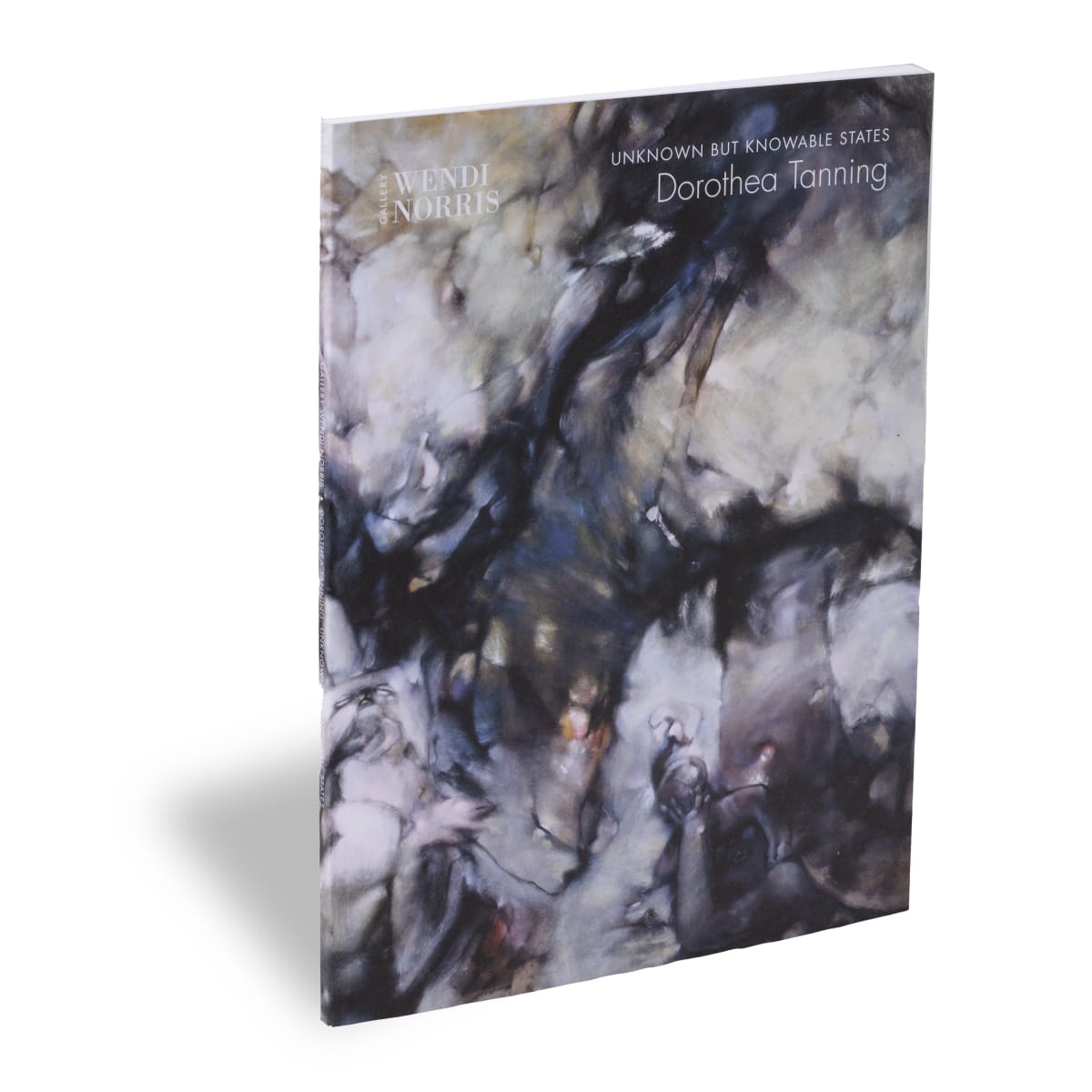Dorothea Tanning | Unknown but Knowable States
"Unknown but Knowable States" comprises over thirty paintings, sculptures and drawings by the late artist Dorothea Tanning (American, 1910-2012), perhaps best known for her early Surrealist paintings. This is a rare opportunity to view the adventurous breadth of Tanning's prolific art practice through a group of works created between 1960 and 1979 while she was living and exhibiting primarily in France, several of which have never before been exhibited. An eighty-page exhibition catalog will feature an essay by the Scottish scholar, Catriona McAra, who examines Tanning's unique vision in the context of art history. With pieces ranging from small intimate studies to canvases of monumental scale, this exhibition will span the entire 5,000 square feet of Gallery Wendi Norris, the first time in the gallery's history.
This exhibition charts Tanning's transition from her kaleidoscopic and increasingly abstract paintings of the 1960s through her return to a more figurative mode in the 1970s. In these images, the nude female figure, often partially rendered or veiled, appears within evocative scenes of revelry, peril or repose. Each demonstrates her life-long dedication to the revelation of an inner world that balances ecstasy with despair, and to what she described as a desire to capture "unknown but knowable states."
One of Tanning's largest paintings, Chiens de Cythère (Dogs of Cythera) (1963), will anchor the exhibition and is also the focal point of the catalogue essay. This ambitious, turbulent oil on canvas depicts the mythical birthplace of the Goddess of Love in a composition that is fractured and abstract yet erotically charged. In contrast, the mysterious and surreal Notes for an Apocalypse (1978), one of the latest paintings in the show, displays increasingly gestural brushwork and a flash of light and color that together convey bodies once again solidly present and the potent energy of a domestic scene bursting apart.
Tanning's imaginative investigations of the figure also play out in sculptures of fabric and faux fur from 1969-70. Rarely exhibited, Étreinte (1969) and Traffic Sign (1970) belong to a series of soft sculptures that culminated in the installation piece Hôtel du Pavot, Chambre 202 (1970-73), which is now in the collection of the Centre Georges Pompidou in Paris. Works on paper from the small gouache Phantom (c. 1965) and the watercolor Study for À la dérive (Adrift), (1967) to the gentle graphite studies for Hôtel du Pavot (1970-71) and the energetic pen on board Birthday 1976 (1976), reveal Tanning's ongoing experimentation with drawing and painting materials and processes and the inspiration and inner light that animate her paintings.
The pieces in this show bridge the exuberant Surrealist spirit of Tanning's career with the singular vision she developed over the course of decades. They also demonstrate work ahead of its time, forecasting that of prominent contemporary artists such as painter Cecily Brown, photographer Francesca Woodman, and installation artists Urs Fischer, Sandy Skoglund, and Kim Dingle, among others.




